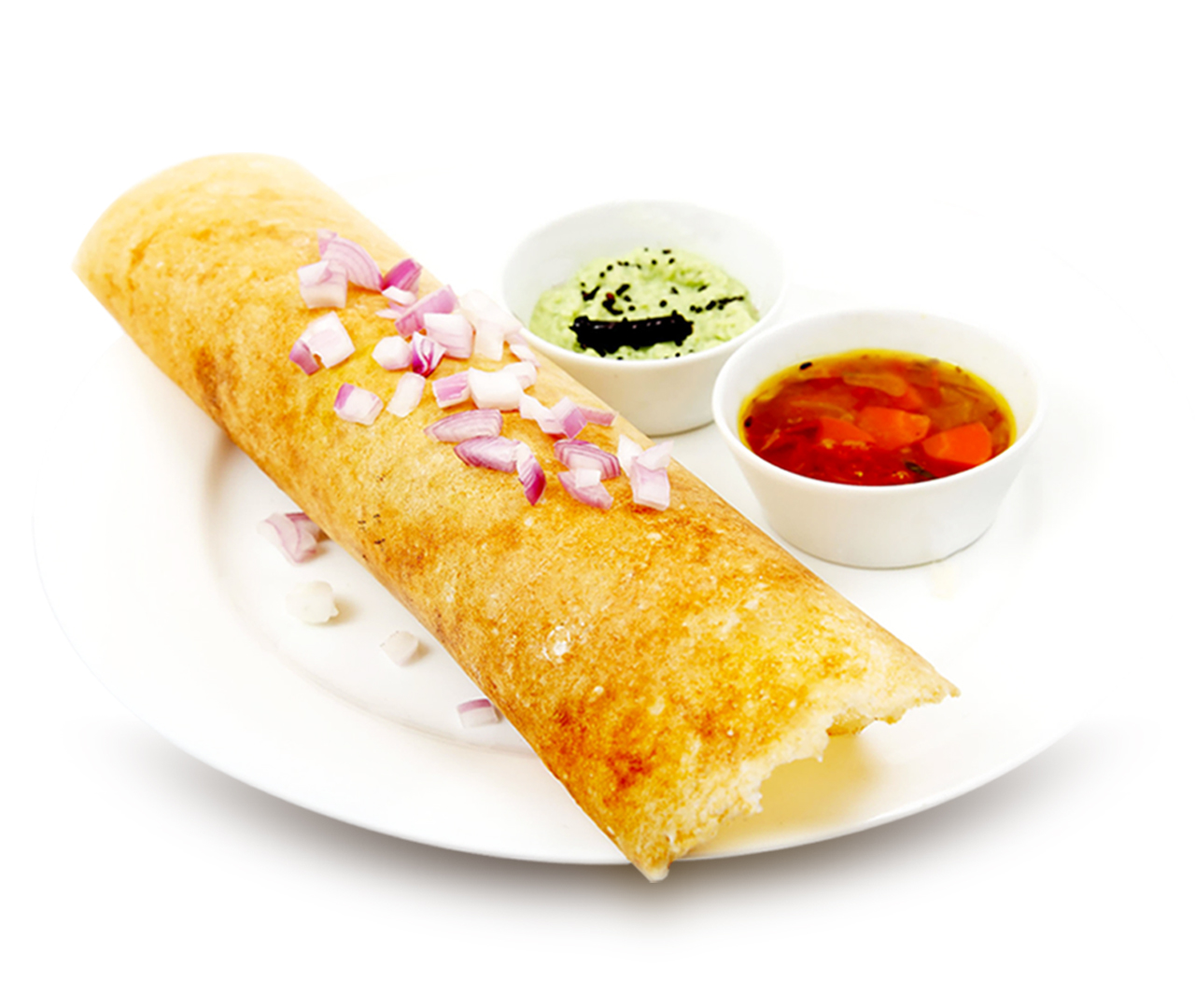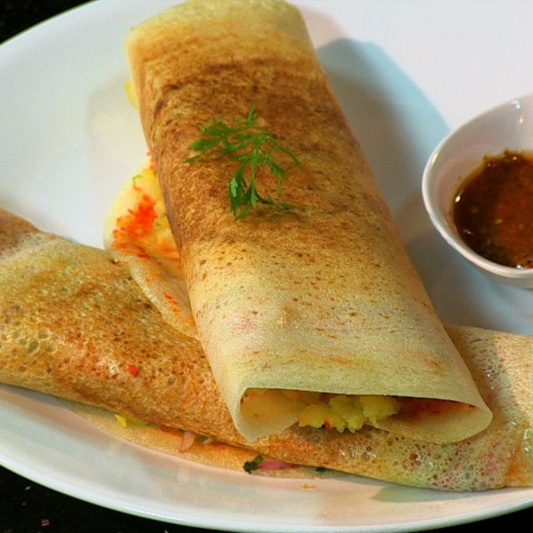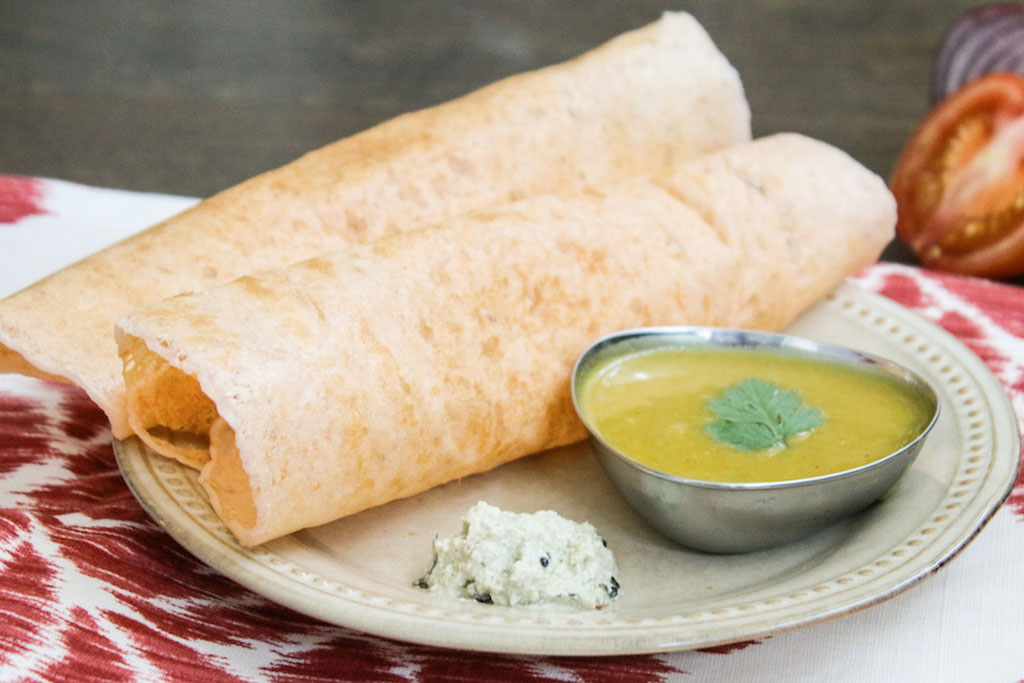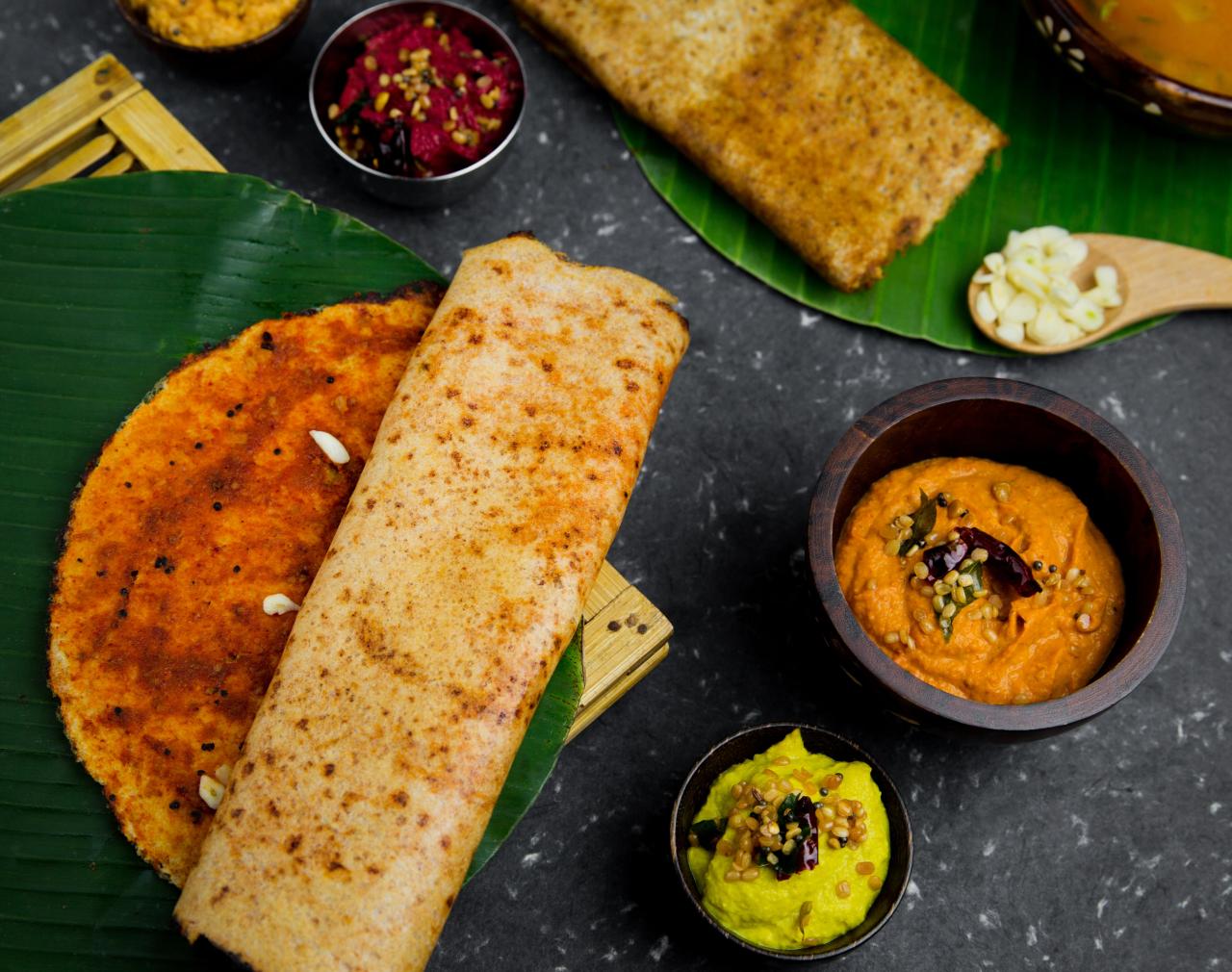Dosai, often spelled dosa, is a traditional Indian dish with roots deeply embedded in the south of the country. It’s a kind of pancake made from a fermented batter, primarily consisting of rice and black gram (urad dal). As a chef, I find the beauty of dosai not just in its simplicity but also in its versatility – serving as a canvas for a myriad of flavors and accompaniments, from the tangy sambar to the luscious coconut chutney.
Dosai Recipe


Dosai
Equipment
- 1 large bowl
- 1 blender
Ingredients
- 2 cups idli rice rinsed at least four times in cold water drained well
- 1/2 cup husked whole black lentils rinsed at least four times in cold water, drained well
- 1 teaspoon fenugreek seeds
- 21/4 cups cold water divided
- 4 ice cubes
- 1 teaspoon salt
- 1/2 cup water plus more as needed
- 8 teaspoons vegetable or corn oil divided
Instructions
- In a large bowl, combine the rice and enough cold water to cover by 2 to 3 inches. In a medium bowl, combine the lentils, fenugreek seeds, and enough cold water to cover by 3 to 4 inches. Let both soak at room temperature for 6 to 8 hours.
- Drain the lentils and fenugreek seeds. Add them to a blender and blend until smooth, adding 1⁄2 to 3⁄4 cup cold water, a little at a time. Transfer the lentils to a large bowl.
- Drain the rice and add half to the blender. Add 2 ice cubes and 1⁄2 cup of cold water and blend until smooth. Transfer this to the bowl with the ground lentils.
- Add the remaining rice, 2 ice cubes, and 1⁄2 cup of cold water to the blender and grind until smooth. Add it the rice to the bowl. Rinse the blender with the remaining 1⁄2 cup of cold water and add it to the batter. Add the salt.
- Using clean hands, mix the batter until the lentils and rice are well combined, the batter should be thick. Cover the bowl with a lid or plastic wrap and place it in a warm place to ferment for 8 to 10 hours. The batter should double in size and look frothy. Using a spoon or ladle, mix the batter one more time before preparing the dosai.
- Transfer 2 to 3 cups of batter to a medium bowl and stir in 1⁄2 cup of water, or more as needed, until the batter has a pouring consistency a little thicker than pancake batter.
- Heat a round cast iron or nonstick griddle over medium heat.
- Reduce the heat to low and pour a ladleful of batter onto the griddle. Using the back of the ladle, spread the batter around the griddle starting from the middle and moving out toward the edges. A super thin dosa is called paper dosa, and those a little thicker are called kal dosa.
- Spread 1 teaspoon of oil around the edges of the dosa. Increase the heat to medium and cook the dosa for 45 to 50 seconds. Using a flat spatula, loosen the edges and carefully flip the dosa. Cook for 25 to 30 seconds before removing it from the griddle. Repeat with the remaining batter and oil. Serve hot.
Notes
Cooking Tips about Dosai

- Batter Consistency: The consistency of your dosai batter should be such that it’s thick enough to coat the back of a spoon, yet fluid enough to spread easily on a hot tawa. Achieving this balance is critical for making those impeccably thin and crisp dosais.
- Fermentation: Dosai batter needs to ferment well to get the right texture and taste. If you’re in a cooler climate, find a warm spot in your kitchen or preheat your oven for a few minutes, turn it off, and place your batter inside to ferment properly.
- The Tawa: Use a flat, non-stick griddle or seasoned cast-iron tawa for making dosais. The surface needs to be moderately hot before spreading the batter. If it’s too hot, the batter will not spread evenly; if it’s not hot enough, the dosai won’t crisp up.
- Spreading Technique: Pour the batter in the center of the tawa and swiftly, using the flat base of the ladle, spread the batter in a spiral outward motion to get an even, round shape. This also helps in getting that coveted even thickness that makes for a perfect dosai.
- Oil/Ghee: A small drizzle of oil or ghee around the edges can add a delightful flavor and aid in making the dosai edges deliciously crispy. However, be mindful — too much can make the dosai soggy.
- Flipping Dosai: When the edges start lifting slightly, gently slide the spatula under the dosai and flip it over. Allow the other side to cook for a few seconds. Some prefer to cook only one side for a softer interior.
- Variations: Feel free to experiment by adding finely chopped onions, green chilies, and coriander leaves to the batter for a different twist. You can even fill your dosai with a masala of your choice, like the classic potato masala for masala dosai.
- Serve Hot: Dosais are best enjoyed hot straight from the tawa. Accompany them with traditional sides like sambar and various chutneys for a complete experience.
Serving suggestions about Dosai

- Traditional Style: Pair your dosai with the classic sides—aromatic sambar and a duo or trio of chutneys, such as coconut chutney for sweetness, tomato chutney for a tangy zing, and mint or coriander chutney for a refreshing herbaceous note.
- Masala Dosai: Stuff your dosai with a filling of spiced potatoes, onions, and mustard seeds. Fold it into a neat roll before serving, turning your dosai into a hearty and satisfying meal.
- Egg Dosai: For a protein-rich version, crack an egg onto the dosai as it cooks on the tawa, spreading it gently to cover the surface. Season with salt and pepper, and fold or roll before serving.
- Uthappam: Though not a dosai in the traditional sense, uthappam is a thicker variation where the batter is topped with a blend of finely chopped onions, tomatoes, green chilies, and coriander leaves, resulting in a delightful color and flavor profile.
- Cheese and Vegetables: Sprinkle shredded cheese and diced vegetables like bell peppers and onions on top of the dosai while it’s cooking for a fusion twist.
- Dessert Dosai: Spread a thin layer of sweetened condensed milk over your dosai, add sliced bananas or grated coconut, and dust with cardamom powder or cinnamon for a simple yet indulgent dessert.
- Paneer Bhurji Dosai: Sauté crumbled paneer with onions, tomatoes, and spices, then spread it onto the dosai. This adds a rich and flavorsome touch to the otherwise crisp and light pancake.
- Serve Hot and Fresh: Dosais are best when they’re served immediately after cooking to enjoy the contrast of textures. Have your accompaniments ready and invite your guests to savor their dosais right off the tawa.
Top 5 FAQs about Dosai

- What is Dosai and what are its main ingredients? Dosai, or dosa, is a traditional South Indian dish that resembles a thin pancake or crepe. It’s made from a fermented batter comprising rice and black gram (urad dal). The fermentation process not only enhances the flavor but also increases the nutritional value, making it a healthy and popular choice for breakfast or snack.
- How long does it take to ferment Dosai batter? The fermentation time for dosai batter can vary depending on the climate. Typically, in warmer conditions, it may take around 8-12 hours. If you are in a cooler climate, you might need to find a warm spot or use an oven to help with the fermentation, which could extend the time required to properly ferment the batter.
- Is Dosai vegan and gluten-free? Yes, dosai is naturally vegan and gluten-free, as it is made from rice and urad dal, without any dairy or wheat ingredients. However, when serving dosai with accompaniments like ghee or cheese, it no longer remains vegan.
- Can Dosai be made ahead of time? While dosais are best enjoyed fresh off the tawa, you can certainly prepare the batter ahead of time and refrigerate it. The batter can be stored in the fridge for up to a week. When you’re ready to make dosais, just bring the batter to room temperature, check if it needs water to adjust to the right consistency, and then proceed to cook.
- What are some popular variations of Dosai? There are many variations of Dosai, including masala dosai, which is filled with a spiced potato mixture, rava dosai made with semolina, which offers a different texture, and egg dosai, where an egg is spread over the dosai as it cooks. You can also find variations with different fillings such as paneer bhurji dosai or dessert versions with sweetened condensed milk and fruit.
In summing up the essence of dosai, one cannot help but marvel at how this simple fermented pancake has come to symbolize the rich tapestry of Indian culinary tradition. Dosai isn’t merely a dish; it’s a celebration of culture, an everyday staple that effortlessly brings together taste, health, and heritage in a single bite.

Leave a Reply